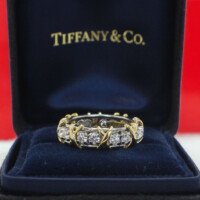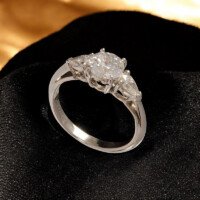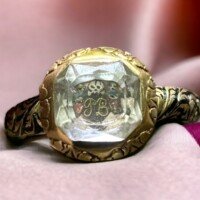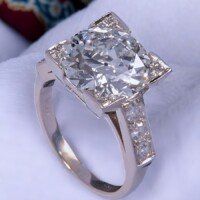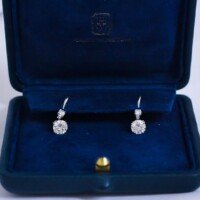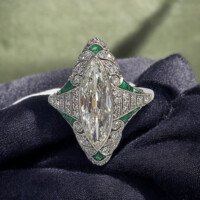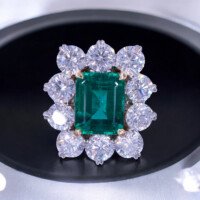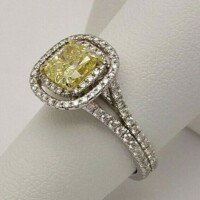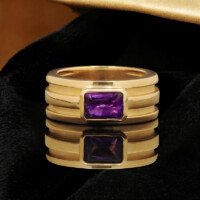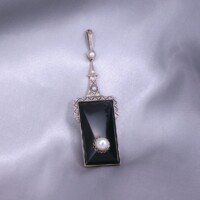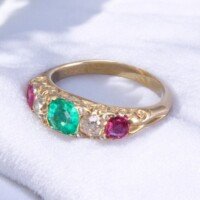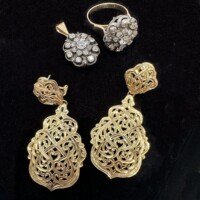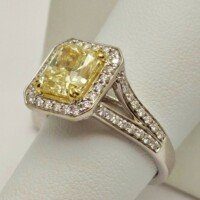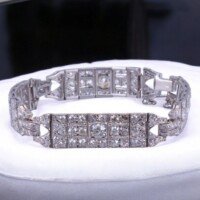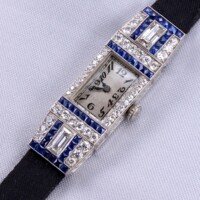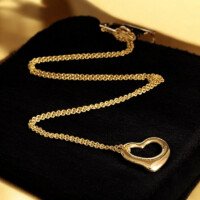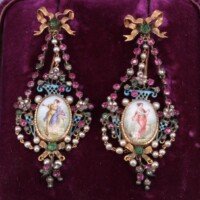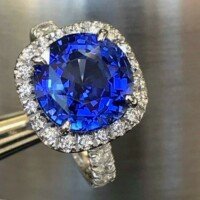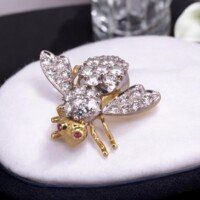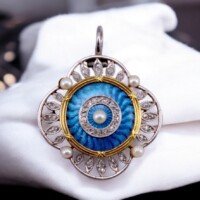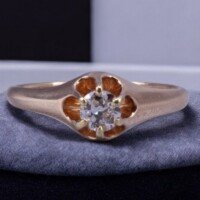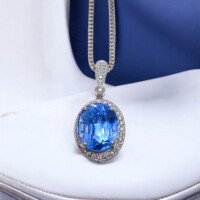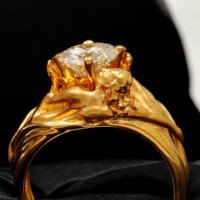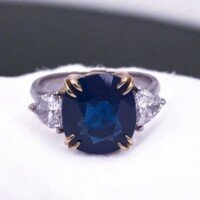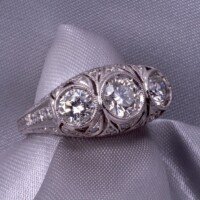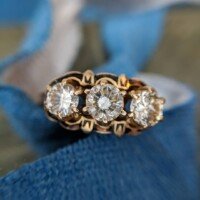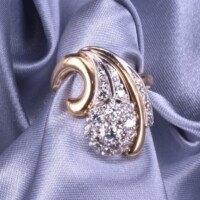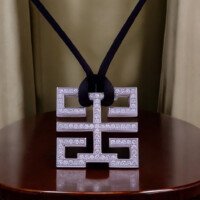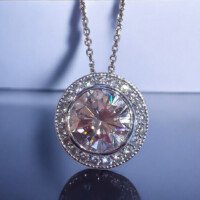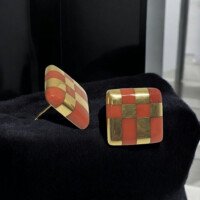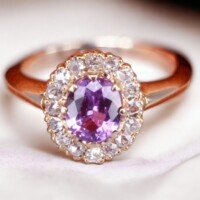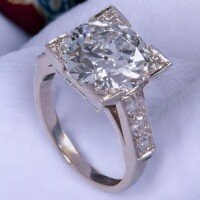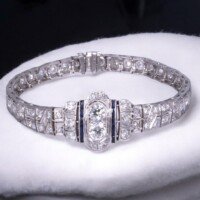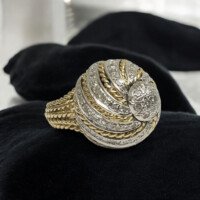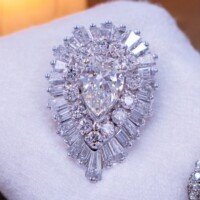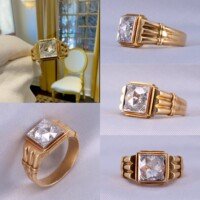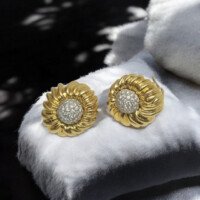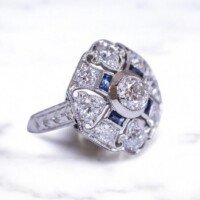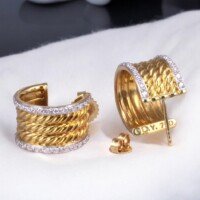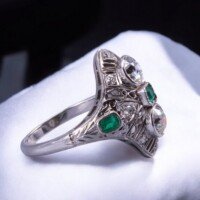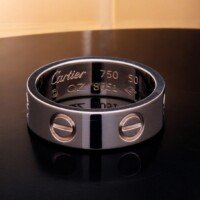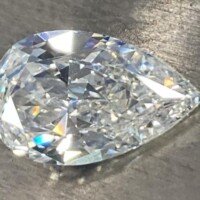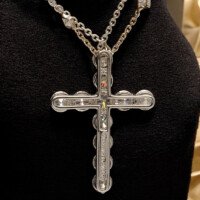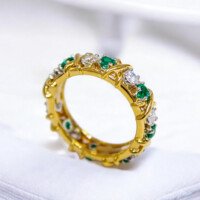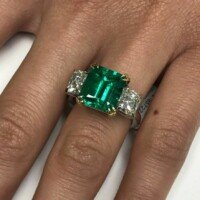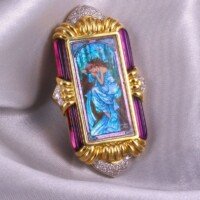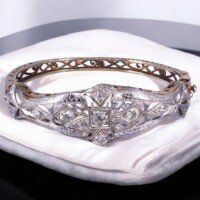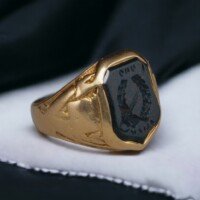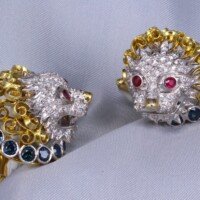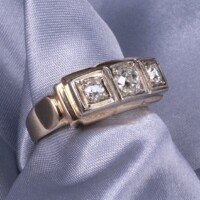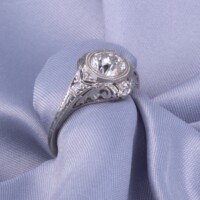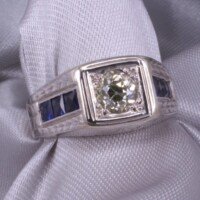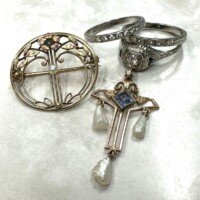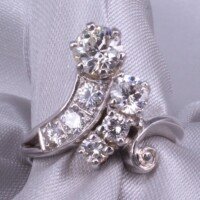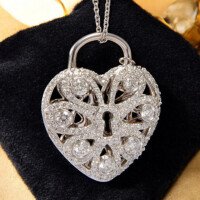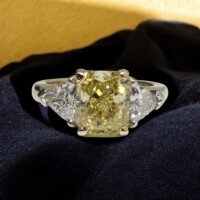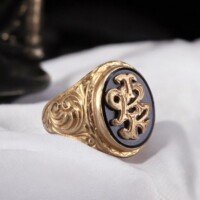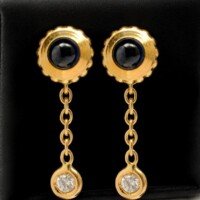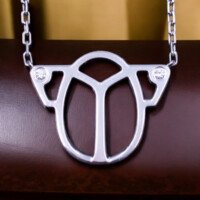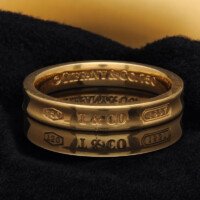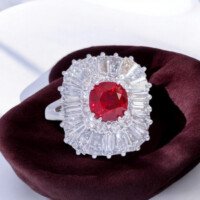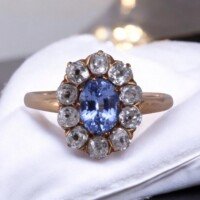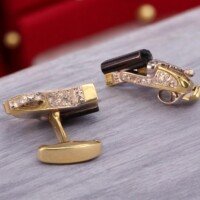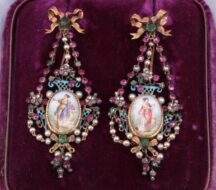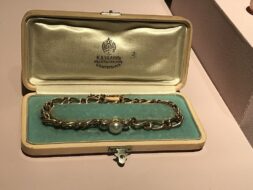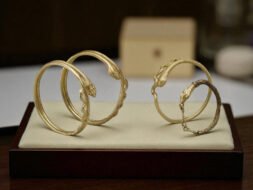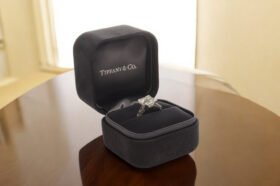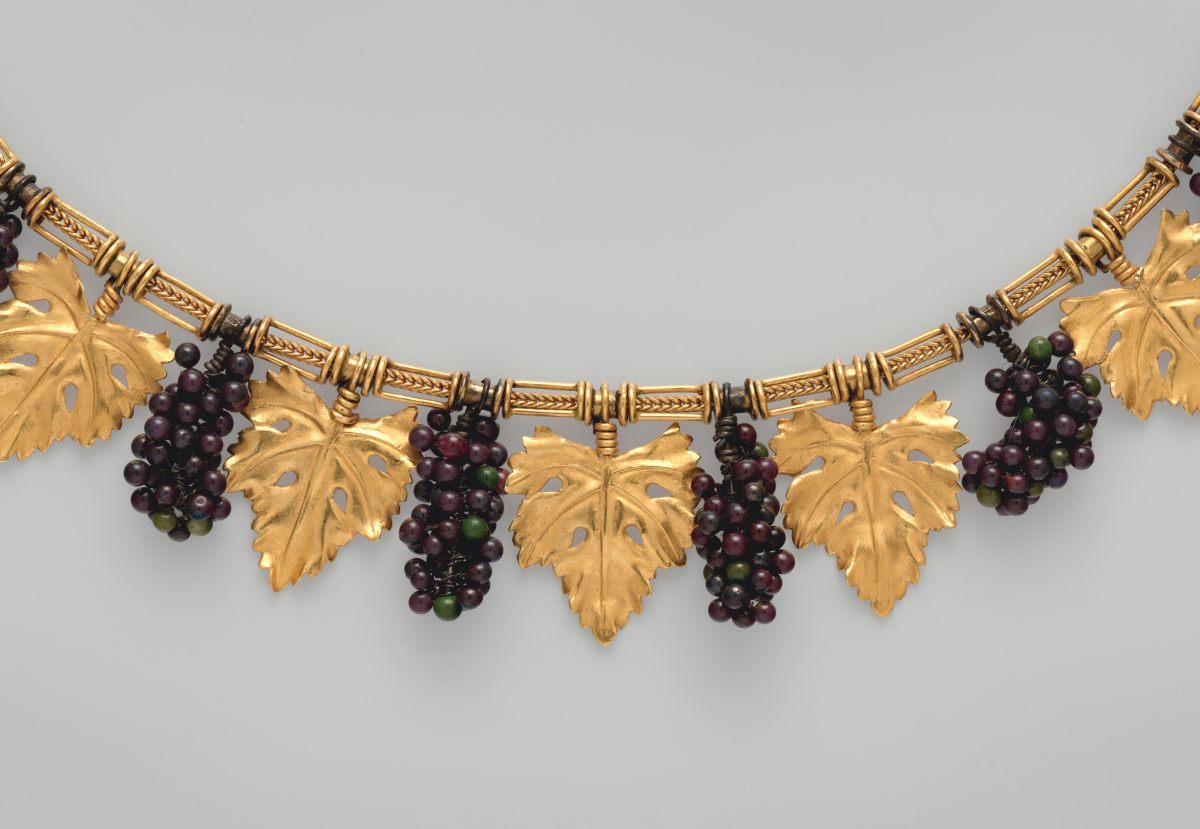
15 Jul Sell a Necklace (Antique, Vintage or Modern)
If you would like to sell a necklace in San Diego, such as a Tiffany diamond necklace or an antique platinum necklace, C. Blackburn Jewelers will provide you with a free cash appraisal. During your consultation at our estate jewelry store in La Jolla, our owner Carl Blackburn will share with you his knowledge about your necklace, including important details that may add value to your item (and which you might not be aware of).
To make an appointment to sell a necklace, please send us a message via our contact page, along with photos of your necklace. To learn more about the history of necklaces and the antique necklaces that we buy, please continue reading!

The Early History of Necklaces
Throughout human history, necklaces have played a significant role in personal adornment, cultural expression, and religious symbolism. From ancient civilizations to the Renaissance era, necklaces have evolved in styles, designs, and materials, reflecting the diverse cultures and beliefs of their wearers.
In ancient times, necklaces were created using various materials readily available to different civilizations. One of the earliest forms of necklaces can be traced back to the Paleolithic era, where early humans strung together shells, bones, teeth, and stones to create simple yet meaningful adornments. These necklaces, often made from natural materials found in their surroundings, served as expressions of personal identity and cultural belonging.
As civilizations developed, so did the styles and designs of necklaces. In ancient Egypt, for example, necklaces became an integral part of religious and social life. Egyptian necklaces were characterized by intricate beadwork, amulets, and pendants featuring symbolic motifs such as the Ankh (symbol of life) and the Eye of Horus (symbol of protection). These necklaces were crafted from precious metals like gold and adorned with gemstones like lapis lazuli and carnelian, reflecting the wealth and status of the wearer.
Similarly, ancient Greece and Rome boasted their unique necklace designs. Greek necklaces were often made of gold, featuring delicate chains and pendant designs inspired by mythological figures and natural elements. On the other hand, Roman necklaces were elaborate and opulent, incorporating gemstones, pearls, and intricate metalwork. These necklaces were a symbol of wealth and social standing, worn by both men and women.
In Eastern cultures, necklaces took on distinct styles and materials. In ancient China, necklaces were crafted using jade, a highly prized stone symbolizing immortality and spirituality. Jade necklaces were worn as protective amulets and were believed to bring good luck and ward off evil spirits. In India, necklaces known as “mala” were popular, consisting of strings of beads made from materials like coral, pearls, and semi-precious stones. These necklaces were not only fashionable but also carried religious significance, often used in prayer and meditation practices.
During the Middle Ages and the Renaissance, necklaces continued to evolve, influenced by the prevailing cultural and religious beliefs of the time. In medieval Europe, necklaces were predominantly worn by the noble classes and were associated with power and prestige. They were crafted from precious metals like silver and gold, often adorned with gemstones and religious symbols. Cross pendants, in particular, became popular as Christianity gained prominence, symbolizing faith and devotion.
These necklaces from early history (prior to 1700s) are usually sold to museums, and not something that C. Blackburn Jewelers ordinarily buys from the public. We buy antique necklaces starting from around the Georgian period, so let’s learn more about these necklaces.

Georgian and Victorian Necklaces
The Georgian period, named after the British monarchs George I to George IV, spanned from the early 18th century to the early 19th century. During this time, necklaces were characterized by their elegance and refined designs. Necklaces in the Georgian era were often crafted from precious metals such as gold and silver. They featured intricate metalwork, delicate filigree, and detailed engravings. Pearls, diamonds, and other gemstones were also popularly used, with designs often incorporating floral motifs and scrollwork. Necklaces were typically long and graceful, allowing them to be worn in multiple strands or looped around the neck to create a layered effect.
The Victorian period, named after Queen Victoria, covered the mid-19th century to the early 20th century and was marked by a significant shift in jewelry styles. The early Victorian era, also known as the Romantic period, embraced sentimental and symbolic designs. Necklaces during this time often featured motifs such as hearts, flowers, and bows, symbolizing love, friendship, and femininity. Lockets were particularly popular, allowing individuals to keep a treasured photograph or lock of hair close to their heart. These necklaces were crafted from gold, silver, and later in the era, platinum. Gemstones like amethyst, garnet, and turquoise were commonly used, adding vibrant pops of color to the designs.
As the Victorian period progressed, the necklaces transitioned to reflect the changing tastes and societal influences. The mid-Victorian period, also known as the Grand period, saw the rise of elaborate and intricate designs. Necklaces became more opulent, featuring larger gemstones, intricate metalwork, and motifs inspired by nature and historical revival styles. The use of gemstones such as diamonds, rubies, and emeralds became prevalent, often set in clusters or as solitaires. These necklaces were worn by the wealthy upper classes and were a symbol of social status and wealth.
The cultural and religious significance of necklaces during the Georgian and Victorian periods was multifaceted. In these eras, necklaces were not only fashionable accessories but also carried symbolic meanings. They were often exchanged as love tokens, marking special occasions such as engagements, weddings, and anniversaries. Necklaces were also influenced by the prevailing religious beliefs of the time. Cross pendants, for example, were worn as expressions of faith and devotion, especially during the Victorian period when Christianity held significant influence. The use of symbols and motifs in necklaces allowed wearers to express their personal beliefs, affiliations, and values.
Furthermore, necklaces played a role in defining societal roles and expectations. In the Victorian era, certain types of necklaces were associated with specific stages of a woman’s life. For instance, a “cameo necklace” was often worn by unmarried women, while a “mourning necklace” adorned with black stones and lockets symbolized mourning and loss. Necklaces became a way to communicate one’s marital status, social standing, and adherence to societal norms.
Are you looking to sell a Georgian necklace or sell a Victorian necklace in San Diego? Visit C. Blackburn Jeweler’s contact page to tell us about your necklace and set up a free consultation at our jewelry store in La Jolla, CA.
Recent Estate Jewelry Buys
Browse a collection of C. Blackburn Jewelers’ recent purchases of vintage, antique, and estate jewelry.
Easy to Work With
Carl is a great jeweler and easy to work with. He handles a wide variety of services from buying jewelry to designing custom pieces for you. I sold some old jewelry to him, he had very fair prices transactions were handled in a timely manner
Careful Inspection
I recently sold a lot of fine jewelry that I had inherited from my mother. I chose Carl Blackburn because I wanted the pieces to find new homes, rather than be melted down or taken apart. Carl careful inspected and considered each piece before pricing it. He explained the quality of the gold in each piece, the techniques used to craft the pieces, and what went into his pricing. He appreciated the sentimental value of the items and actually had buyers in mind for several of them. I felt that he gave me a fair price the first time I came in, so I returned with additional items to sell a few weeks later. I’d highly recommend Carl Blackburn for selling and buying estate jewelry.
A Straight Shooter
I met with most of the Jewelers around La Jolla and no one was as knowledgeable or as helpful as Carl was to me. Carl Blackburn is a straight shooter and someone you can trust. C. Blackburn Jewelers will forever have my business and recommendation to all of my network for any future jewelry business.
Genuine & Friendly
Being at a downsizing stage of life, I decided to sell as much of my jewelry as possible, and luckily, I came across C. Blackburn Jewelers. I was scared of getting scammed and cheated. Carl had me sitting with him while he examined and evaluated my jewelry. He did not take it into a back room and tell me to return on another day.
He worked methodically and very professionally, answered all my questions, kept my expectations realistic, explained what he was doing as he worked. We also had a very pleasant conversation – he is down-to-earth, genuine, and friendly. I trusted him without hesitation. I was very pleasantly surprised by the outcome and felt I was very fairly treated. I was relieved that the process was stress-free, thanks to Carl’s very professional manner and his genuine friendliness. I recommend him highly, without reservation.
Edwardian, Art Nouveau & Art Deco Necklaces
The turn of the 20th century brought forth a series of distinct artistic movements that revolutionized jewelry design. The Edwardian, Art Nouveau, and Art Deco periods each left their indelible mark on necklace styles, designs, and materials. These periods showcased a departure from traditional aesthetics and embraced innovative approaches to create truly unique and captivating necklaces. This essay will explore the necklaces of the Edwardian, Art Nouveau, and Art Deco periods, highlighting the differences in styles, designs, and materials used.
The Edwardian period, which spanned from 1901 to 1910, was characterized by delicate, elegant designs that reflected the refinement and opulence of the time. Necklaces during this period showcased intricate metalwork and were often crafted in platinum, which became the favored metal due to its strength and ability to hold intricate designs. Edwardian necklaces featured lace-like filigree patterns, milgrain detailing, and delicate openwork settings. Diamonds were the primary gemstone used, as they perfectly complemented the ethereal and feminine aesthetic. Edwardian necklaces exuded a sense of grace and femininity, often incorporating floral and garland motifs, as well as the use of pearls and colored gemstones to add a touch of vibrancy.
The Art Nouveau movement emerged in the late 19th century and continued until the early 20th century. It sought to break away from the rigid forms of the past and embraced the flowing, organic lines found in nature. Art Nouveau necklaces were characterized by their sinuous curves, asymmetry, and motifs inspired by plants, flowers, and mythical creatures. The materials used in Art Nouveau necklaces were diverse, ranging from precious metals such as gold and silver to unconventional materials like horn, enamel, and glass. Gemstones, such as opals, moonstones, and amethysts, were also popular choices due to their iridescent and mystical qualities. The focus on natural forms and innovative materials made Art Nouveau necklaces true works of wearable art.
Following the Art Nouveau period, the Art Deco movement emerged in the 1920s and lasted until the 1930s. Art Deco was characterized by its geometric shapes, bold colors, and symmetrical designs. Necklaces of this period exuded a sense of modernity and luxury, reflecting the exuberance of the Roaring Twenties. Art Deco necklaces featured angular and streamlined designs, often incorporating bold lines, sharp angles, and intricate patterns. The materials used ranged from platinum and white gold to vibrant colored gemstones, such as rubies, sapphires, and emeralds. Additionally, diamonds were highly popular, often cut into geometric shapes like baguettes and emerald cuts to match the overall aesthetic. The combination of contrasting colors, sleek lines, and geometric forms made Art Deco necklaces bold and visually striking.
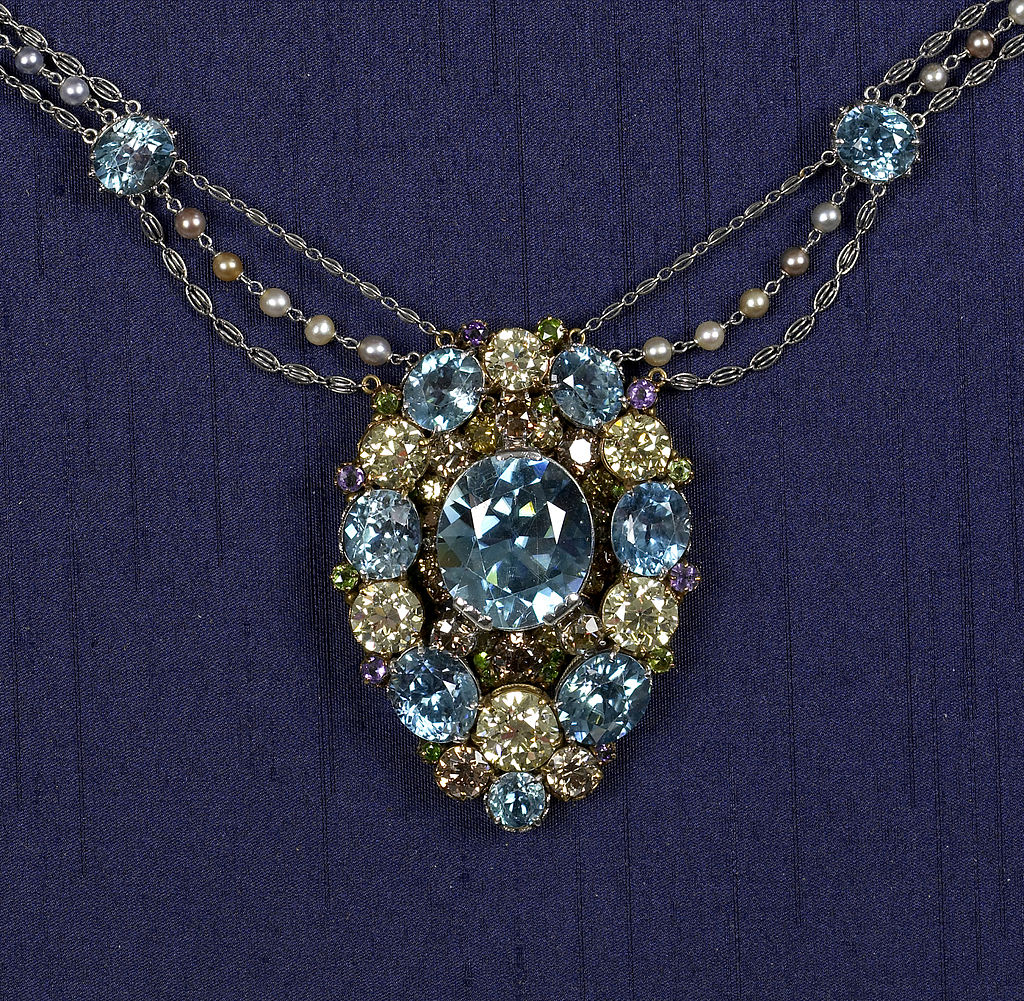
Sell a Necklace to Our San Diego Jewelry Buyers
If you would like to sell an antique necklace or diamond necklace, please contact C. Blackburn Jewelers of La Jolla today. Get a preliminary cash quote by calling 858-251-3006 or send us a message in the contact form below. Please provide as many details as possible about your necklace. To send photos and a text message, please use the following number:
Text Message & Photos:
619-723-8589
When you sell a necklace to our San Diego jewelry buyers you are guaranteed a relaxed and pressure free environment. Our owner Carl Blackburn will gladly share with you all the information he knows about your necklace, so that you can make an informed selling decision. We also buy vintage and antique bracelets. Learn more at: Sell Bracelets.

